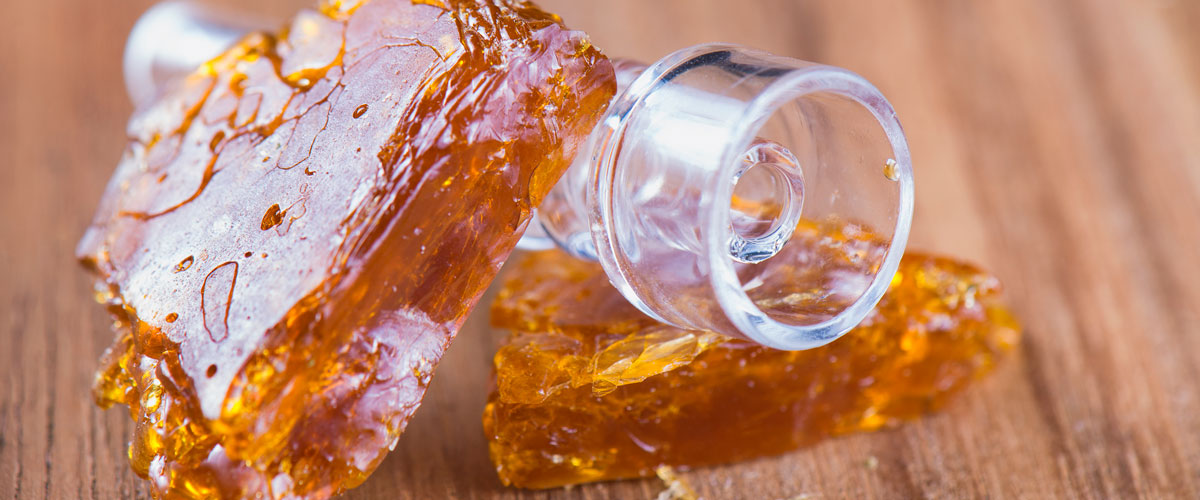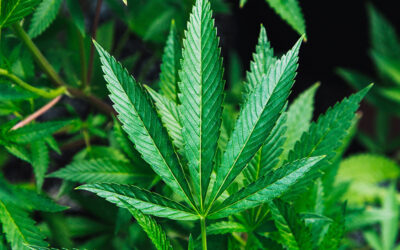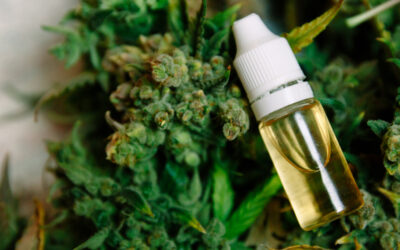A form of cannabis extract, shatter is a hard, translucent concentrate similar in texture and appearance to glass. Learn more in our guide to shatter.
One of the most beautiful and photogenic types of marijuana products on the market right now is shatter, also colloquially called shatter wax, shatter weed, or marijuana shatter. Highly sought after and often Instagrammed, shatter burst onto the scene in a major way in the early 2010’s, giving cannabis consumers a potent new way to vape their favorite strains.
So what is shatter? Industry experts define shatter as a type of marijuana extract, created by extracting the plant’s essential oil, which contains the cannabinoids, terpenes, and other chemical compounds found in the cannabis plant. The term shatter specifically refers to a specific texture of translucent cannabis concentrate that breaks and shatters like glass.
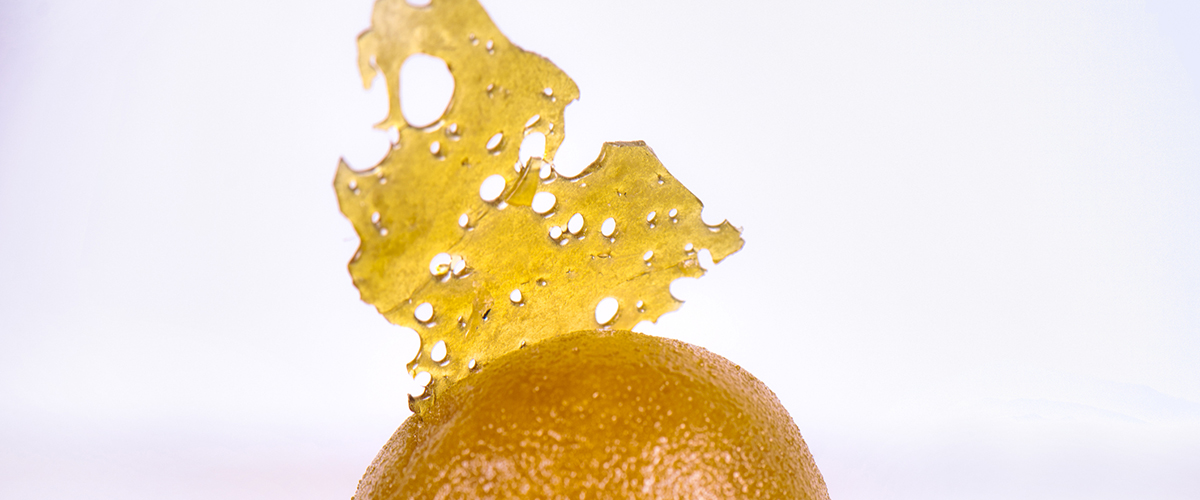
What Are Cannabis Extracts?
Cannabis extracts are created by passing a solvent, such as butane, hexane, isopropyl, or CO2, through cured or fresh cannabis material that has been thoroughly ground. This produces a thick, usually gold or amber-colored cannabis oil full of the plant’s active chemical compounds.
Next, the solvent is purged from the shatter oil using heat and vacuum. The resulting cannabis concentrate is then processed into one of a number of potential forms, including wax, crumble, honeycomb, sap, budder, live resin, and of course, shatter.
How to Use Shatter
Like other marijuana extracts, shatter is usually vaporized or “dabbed” by consumers from a vape pen or specially equipped water pipe called a dab rig. With a potency ranging between 50-90 percent cannabinoids by weight, marijuana extracts like shatter are a fast, efficient, smoke-free way to consume cannabis.
To use shatter in a vape pen, you’ll want to be sure you have one that is specifically designed to be used with marijuana extracts like wax or shatter. These vapes have an atomizer (the vape’s heating element) that will rapidly heat, bringing your shatter to its vaporization point.
To vape shatter, you’ll add your shatter to your vape’s heating chamber, as you would similar marijuana extracts. As the atomizer heats your shatter, it will quickly melt and turn to vapor, which you will then inhale from the vape’s mouthpiece.
Dabbing is the more traditional way to use marijuana shatter. When dabbing, pieces of shatter are applied or “dabbed” onto a hot surface like a hot titanium or ceramic nail or quartz bucket. The shatter will rapidly vaporize upon contact with the hot surface. As you dab your shatter onto the hot surface, you will inhale the vapor through the dab rig’s water chamber and into your lungs.
Visit our what is dabbing guide to learn more about dabbing cannabis shatter, including our How To video.
 What Makes Shatter Different?
What Makes Shatter Different?
For most practical purposes, there is little difference between shatter and other forms of marijuana extract. They are consumed in the same ways and largely have the same potency range. Most differences between cannabis extract types then are cosmetic.
Shatter is an amber or gold color and is transparent to some degree. The reason shatter concentrate is semi-clear has to do with the molecules in the extracted cannabis oil. In shatter, these molecules are all stacked nice and neat in straight rows, one on top of the other. This molecular alignment allows light to pass through the marijuana extract and gives the shatter its glass-like properties.
Heat, moisture, and high terpene content can affect the texture and extraction, which may turn extracted oils into a runnier substance that resembles sap but retaining its translucent appearance.
Concentrates other than shatter and sap are whipped, stirred, or shaken at various times during the process, agitating the individual molecules in the mixture and causing their cloudy appearance. Shatter is not agitated which accounts for its translucency.
However, once the molecules in the cannabis oil are disrupted, usually by whipping, stirring, or shaking the oil during processing, they form irregular structures that are more opaque and let less light through. This is why the transparency of shatter vs wax is so different. When the oil is agitated, you get opaque wax or similar cannabis concentrates instead of the clear concentrates found as shatter.
So why is shatter called shatter? Compared to other extracts, shatter is incredibly hard. When it breaks, it will often crack and well… shatter when pressure is applied to it. Especially on a cold day, shatter can crack violently, sending shards of shatter off in every direction. In that sense, shatter is very much like glass. This is even more true when shatter is in a thick slab.
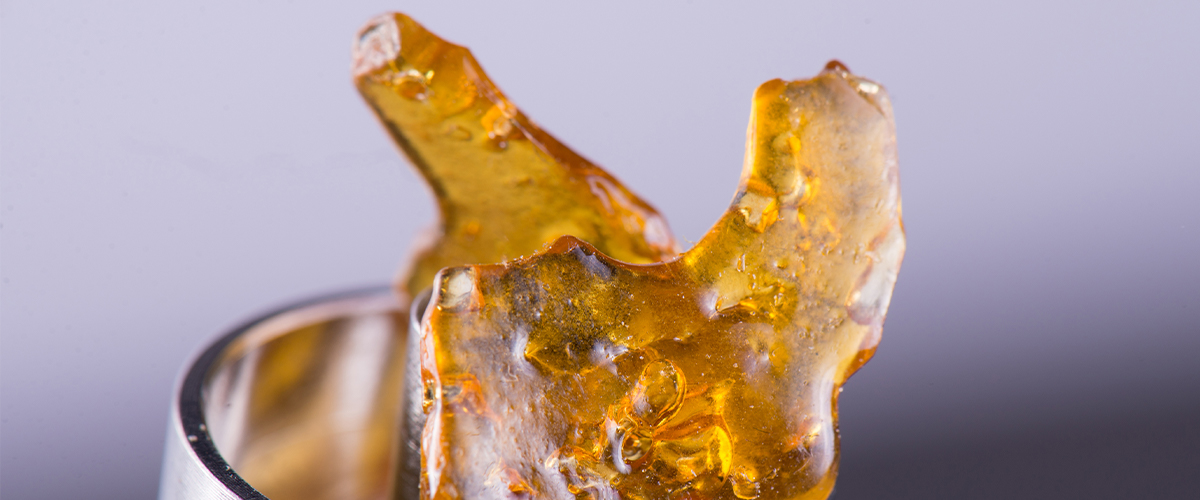 Benefits of Shatter
Benefits of Shatter
A main benefit of dabbing shatter is that it offers an incredibly fast method for cannabinoids to enter the bloodstream, offering near instantaneous effects. Due to the increased potency of cannabis extracts, users are also able to take on a “less is more” approach in using their cannabis.
Dabbing shatter means you no longer need to inhale large amounts of burning plant material to get the effects you want. That is a good thing. Rather than smoking entire joints and exposing your lungs to harmful chemicals in the smoke, consumers can dab once or twice to get their cannabinoids, inhaling only vapor – not smoke.
Shatter is also more stable due to its molecular structure, so it will last longer before degrading compared to wax and other similar extracts. However, some users find the hard consistency difficult to break up and measure out into individual uses. Try lightly heating your dabber before using it to break off a dab from your shatter.
Learn More
Check with your local marijuana dispensary for their selection of shatters and other cannabis extracts. You can also learn more about cannabis extracts, dabbing, and much more on our Cannabis 101 page.

